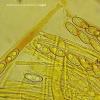
18-05-2009 21:47
 Yannick Mourgues
Yannick Mourgues
Bonsoir à tous. Voici encore une rÃĐcolte de L

18-05-2009 19:10
 Jean Pierre Dechaume
Jean Pierre Dechaume
Chers amis, Sur feuilles de Carex, trouvÃĐ une do

18-05-2009 14:16
Dans le message prÃĐcÃĐdent une image est encore v

18-05-2009 12:28
 Miguel Ãngel Ribes
Miguel Ãngel Ribes
I think it is closer Hypocrea argillacea than H. c

17-05-2009 20:06
 Nicolas VAN VOOREN
Nicolas VAN VOOREN
Bonsoir. Voici les caractÃĻres micros d'une Ostro
Question anthracobia
Patrice TANCHAUD,
02-04-2007 01:16
Si on prend "Nordic MacromycÃĻtes" (tome 1 sur les ascomycÃĻtes), on peut lire que seule anthracobia macrocystis a des paraphyses qui verdissent dans le Melzer ; ce qui facilite bien entendu la sÃĐparation avec A. melaloma.
Par contre, lorsque je lis "Funghi e cenosi di arce bruciate", il est indiquÃĐ que les trois anthracobia (macrocystis, melaloma et maurilabra) ont des paraphyses verdissant dans le Melzer.
Cette contradiction est surprenante, est-ce que quelqu'un aurait l'explication ?
Merci
Patrice
Andreas Gminder,
02-04-2007 08:04

Re:Question anthracobia
Bonjour,
je n'ais pas d'experiÃĻnce personelle, mais je doute que une seul espÃĻce de cet genre montre cet rÃĐaction et les autres ne le montrent pas.
Cet rÃĐaction est un rÃĐaction des carotenoides avec iode et des carotenoides sont prÃĻsent dans toutes (?) cets genres des Humariaceae (je ne sais pas si cets nom est correct ...).
Amicalement,
Andreas
je n'ais pas d'experiÃĻnce personelle, mais je doute que une seul espÃĻce de cet genre montre cet rÃĐaction et les autres ne le montrent pas.
Cet rÃĐaction est un rÃĐaction des carotenoides avec iode et des carotenoides sont prÃĻsent dans toutes (?) cets genres des Humariaceae (je ne sais pas si cets nom est correct ...).
Amicalement,
Andreas
Javier Ormad,
03-04-2007 19:59
Re:Question anthracobia
Comme bien t'a commentÃĐ Andreas, l'ÃĐchange à une coloration verdÃĒtre des parafisis aprÃĻs un contact avec iode est une rÃĐaction des carotenoides, tout de suite cela ne peut pas Être une caractÃĐristique distinctive d'A. macrocystis. Dans mon expÃĐrience, aussi A. melaloma.
Une autre chose serait les doutes qui m'engendrent les actuelles espÃĻces du genre Anthracobia.
Des saluts
Une autre chose serait les doutes qui m'engendrent les actuelles espÃĻces du genre Anthracobia.
Des saluts
Mirek Gryc,
08-07-2020 12:57
Re : Question anthracobia
Hi
The discussion is quite archival but I decided to refresh it :)
Recently I found several Anthracobia collections and because I didn't remember if I had previously checked the reaction of the paraphyses content to iodine, I tested both collections this time. I used Lugol for the test.
Anthracobia tristis had a beautiful reaction, staining the contents of paraphyses green.
You can watch it on my website (photo number 15)
http://grzyby-pk.pl/gat_a/gat_anthracobia_tristis.php
I did the same with Anthracobia melaloma. In her case, however, I did not observe any reaction (photo below).
Other photos of this collection can be viewed on the website;
http://grzyby-pk.pl/gat_a/gat_anthracobia_melaloma.php
The discussion is quite archival but I decided to refresh it :)
Recently I found several Anthracobia collections and because I didn't remember if I had previously checked the reaction of the paraphyses content to iodine, I tested both collections this time. I used Lugol for the test.
Anthracobia tristis had a beautiful reaction, staining the contents of paraphyses green.
You can watch it on my website (photo number 15)
http://grzyby-pk.pl/gat_a/gat_anthracobia_tristis.php
I did the same with Anthracobia melaloma. In her case, however, I did not observe any reaction (photo below).
Other photos of this collection can be viewed on the website;
http://grzyby-pk.pl/gat_a/gat_anthracobia_melaloma.php
Are there any new / reliable information about this?
best regards
Mirek


